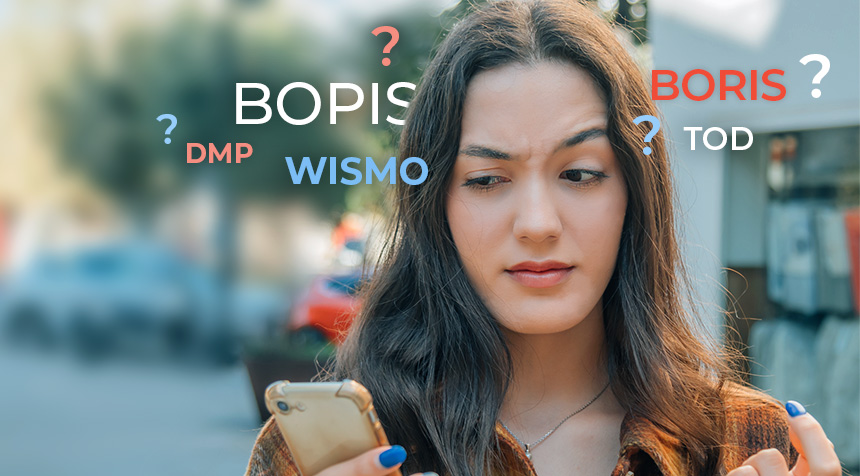With this surge in ecommerce, more and more use of acronyms and abbreviations seems to be appearing, and while many have stayed the same, new ones are revealed all the time. Here’s a list of key acronyms that can come in handy.
- 3PL – 3rd Party Logistics. A third party logistics provider organizes the use of third-party businesses by outsourcing its services of distribution, warehouse and fulfillment operations.
- BODFS – Buy Online, Deliver from Store. This concept has changed how the industry thinks about managing a supply chain. More and more omnichannel retailers are investing in this strategy
- BOPIS — Buy Or Pickup In Store. It’s an omnichannel fulfillment model meant to serve your business needs as well as the customers by enabling them to make a purchase online and then pick-up their order in store.
- BORIS — Buy Online Return In Store. This is a fulfillment model meant to display several return options for customers. Customers need to see a returns option to feel confident to purchase online. If they don’t, there’s a good chance they’ll shop elsewhere.
- CPG – Consumer Packaged Goods refers to merchandise that customers use regularly in everyday life and replace on a frequent basis.
- DMP – Delivery Management Platform, a SaaS, data driven platform that is used to plan, scale and optimize last mile delivery operations from one place. A complete DMP covers the entire last mile delivery experience, starting from shopping & scheduling and delivery & fulfillment, through tracking & communications to returns and rating.
- DP – Delivery Provider that’s contracted to deliver something to the consumer, and is the one responsible for providing the delivery.
- FADR – Today, it is very common for deliveries to be delayed or slowed down for various reasons. First Attempt Delivery Rate is a measurement of how many successful last mile deliveries were made the first time.
- FTL – Full Truck Load is most commonly used in large shipments where one has the exclusive use of the entire truck.
- JIT – Just in Time delivery relates to the inventory management process of delivering goods at the exact time that they’re needed by the customer.
- LTL – Less than Load refers to the transportation of products that don’t require the entire truck.
- LMD – Last Mile Delivery is the final step of the delivery process from when the order is complete and the consumer receives the package. Last mile delivery is key for customer experience and is the most expensive and time-consuming part of the shipping process
- ODD — On Demand Delivery refers to the process of retailers, restaurants, manufacturers, grocery stores, etc. being able to deliver orders quickly and without advanced notice. ODD is widely used thanks to the popularization of the on-demand delivery app.
- OMS – Order Management System is a digital system that allows businesses to coordinate the entire fulfillment process, starting from the order collection, inventory, and delivery visibility to service availabilty.
- Phygital – An omnichannel fulfillment model which merges the digital and physical world to provide a unique, seamless and interactive experience for consumers.
- PUDO – Pick Up and Drop Off is a designated location where customers can come to collect parcels, and drop off items as part of their returns process.
- TOD – Time Out The Door. This refers to the time it takes drivers to load products onto a truck or vehicle and leave the warehouse, store, fulfillment center or distribution center.
- TOS – Time On Site. This refers to the time on site at the delivery location, usually calculated from the time of parking until the driver leaves. This may change based on the type of service.
- VRP – Vehicle Routing Problem, is a new methodology for route optimization. The goal is to find optimal routes for multiple vehicles visiting a set of locations. Optimal routes refers to routes with the least total distance. In cases where there are no other constraints, assigning one vehicle to visit all locations will be the adequate solution.
- WISMO – Where Is My Order is used as an umbrella term for inbound customer inquiries. The use of a DMP has proven to reduce WISMO calls significantly.



